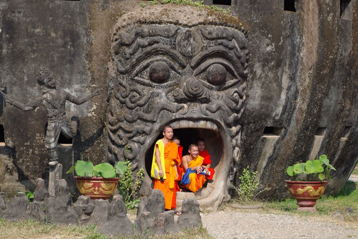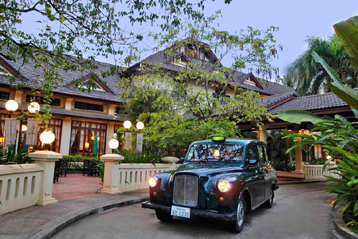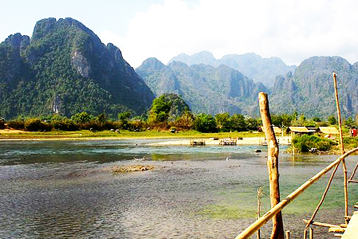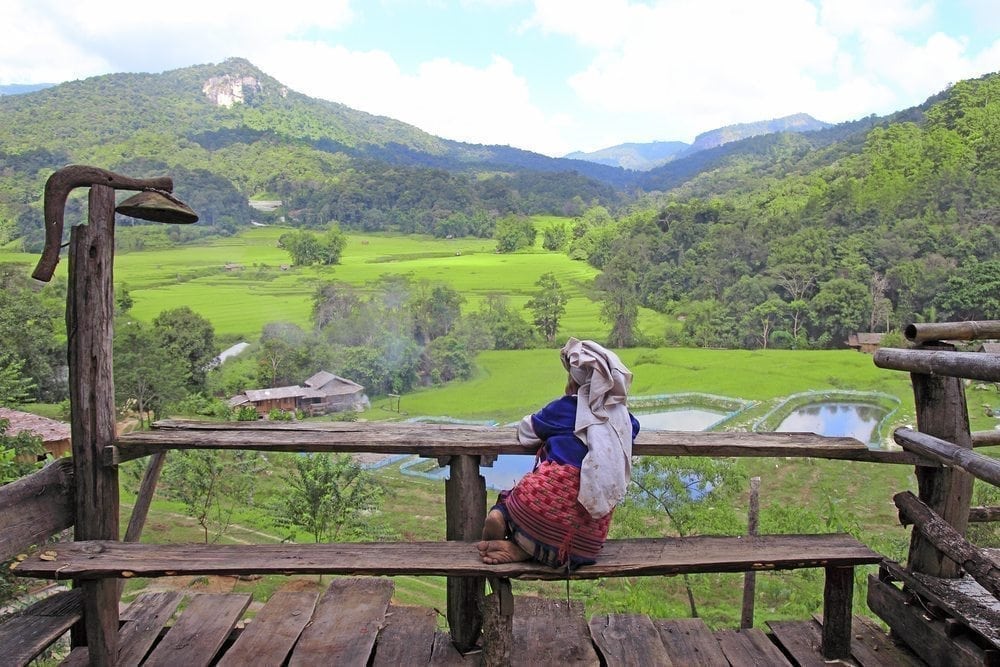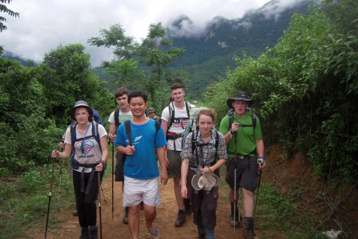Politics & The Economy
At first glance the politics and economy of Laos seem simple enough: a one- party system is controlled by ageing revolutionaries that themselves have me a new elite, who have the power to control the exploitation of the country’s natural resources, can squash any dissent and cooperate enough with foreign donors to keep the aid dollars coming in. But this generalization is just that – the reality is more complex.
Laos is indeed a single party socialist republic, with the only legal political being the ruling Lao People’s Revolutionary Party (LPRP). President Chummalv Savasone is both the head of state and the head of the LPRP; the I of government is Prime Minister Bouasone Bouphavanh. Both were appointed to their live-year terms by the 115-member National Assembly in June 2006. The National Assembly itself was elected in April 2006 and consists of 113 LPRP members and two non-partisan independents. There was, and remains, no legal opposition.
Change seems to come slowly in Laos, but when it does most policies and decisions come from a IO-member Politburo and a 52-member Central Committee – two powerful vestiges of the Soviet-style system adopted after the Pathet Lao takeover in 1975. Their decisions are rubber-stamped by the National Assembly.
Few outside the inner sanctum really understand the political scene, but it’s accepted that the LPRP is loosely split between an older, more conservative guard and younger members pushing for limited reform. Cynics will tell you the infighting is mainly for the control of the lucrative kickbacks available to those who control the rights to Laos’s rich natural resources. Others say the reformers’ primary motivation is to alleviate poverty more quickly by speeding up development. The reality most likely lies somewhere between these two extremes.
Economically, Laos is in an interesting period. After the dark times of the Asian financial crisis in the late 1990s the economy is growing at a robust 7% per year. However, other numbers don’t look so hot. The World Bank rates Laos as one of the least developed countries in East Asia, with more than 75% of people living on less than US$2 a day. More than three quarters of thepopulation still live as subsistence farmers and gross domestic product was just US$2.9 billion in 2005. Major exports are electricity, garments. timber products and coffee, in that order. In recent years tourism (see p72) has become one of the main earners of foreign income, much of which flows directly into the Dockets of those who need it most.
Foreign aid remains a constant of the Laos economy, as it has been since first the French established a basic infrastructure, followed by e wartime investment by the USA. Soviet and to a lesser extent Vietnamese assistance saw Laos into the 1990s, when the Japanese and Western governments and NGOs started picking up the development tab. Laos’s e is unsurprising when you consider there is little effective taxation and the country is only now, for the first time, developing notable export capacity (in hydropower). Put simply, the money needed for building roads, bridges, schools, hospitals etc didn’t exist at home, so someone else had to e bill, or allow Laos to continue languishing in poverty.
In recent years China has started spending some of its enormous surplus in Laos. Apart from the obvious investment in infrastructure such as roads, dams and plantations, this has two significant effects. First, Chinese aid comes with few strings attached, meaning for example that roads, plantation and dams are built by Chinese companies with little or no concern for local people or environments.
This is in contrast to the usual carrot and stick approach of Western donors, who supply aid in various forms that is dependent on the Lao government improving their systems and getting involved in the development rather than Just sitting back and waiting for the dollars to roll in. Of course, not all Western aid programs are perfect – most are far from it most at least pay some attention to factors like governance and environmental impact.
Second, if one of your largest donors, biggest regional political power and enthusiastic investors is a one-party state just like you, it’s not the sort of role model that will encourage political or economic reform. Not that significant reform appears to be on the Lao government’s agenda anyway, but trying to imitate China won’t help get it there.
The overexcited development of hydroelectric and mining operations accepted to reduce Laos’s reliance on foreign aid to a certain extent Mines, such as the gold and copper operation at Sepon, are beginning to contribute to the government coffers. Dams like Nam Theun 2 will do likewise. Just who benefits from these projects, and how many will feel their negative impacts is debatable. What seems more certain is that while foreign companies extract sizable profits from their operations in Laos, the taxes and concession fees they pay will take a long time to trickle down your average Lao family, and most will stay poor for quite some time to come.
More guide...
Responsible Travel
Being a responsible eco tour operator is at the heart of what ACTIVETRAVEL ASIA is all about. From the start, we have been committed to offering low-impact tours that benefit traveler and host alike. We work with local communities, businesses and individuals to develop sustainable tourism opportunities that help local economies while minimizing negative environmental and cultural impacts.
Asia Travel News


